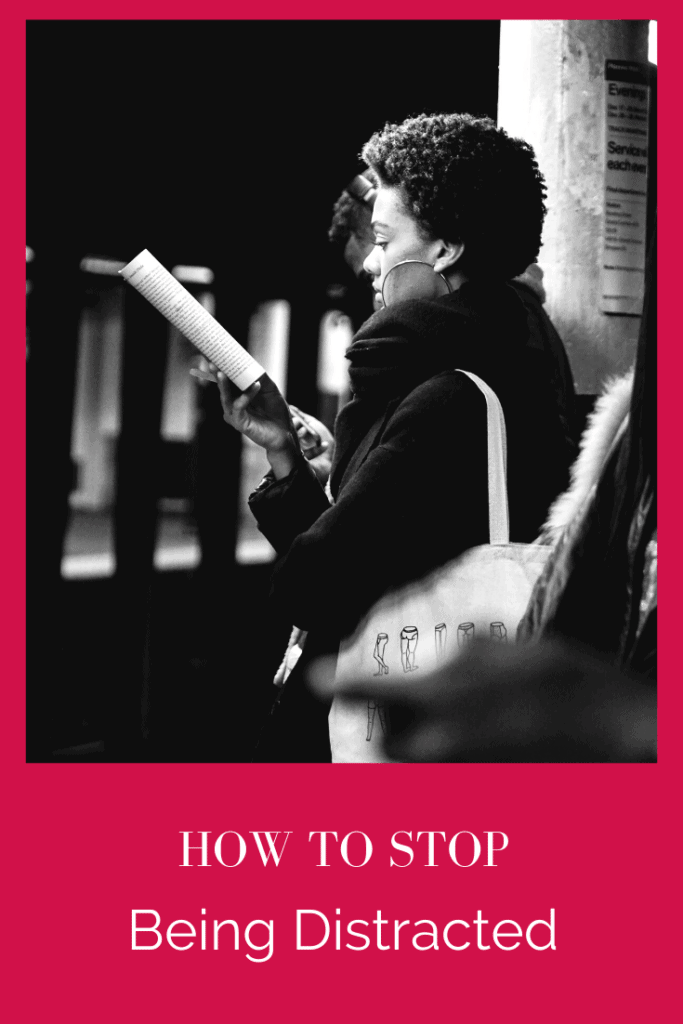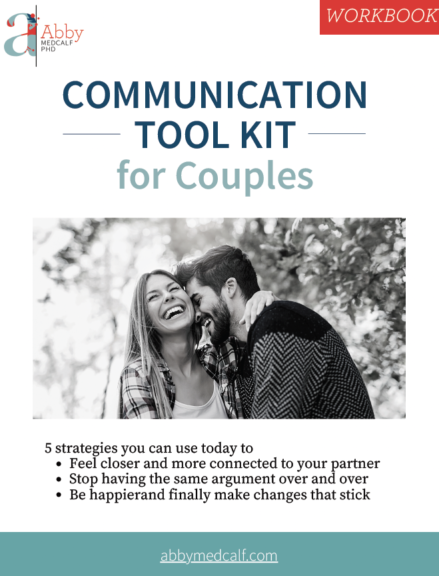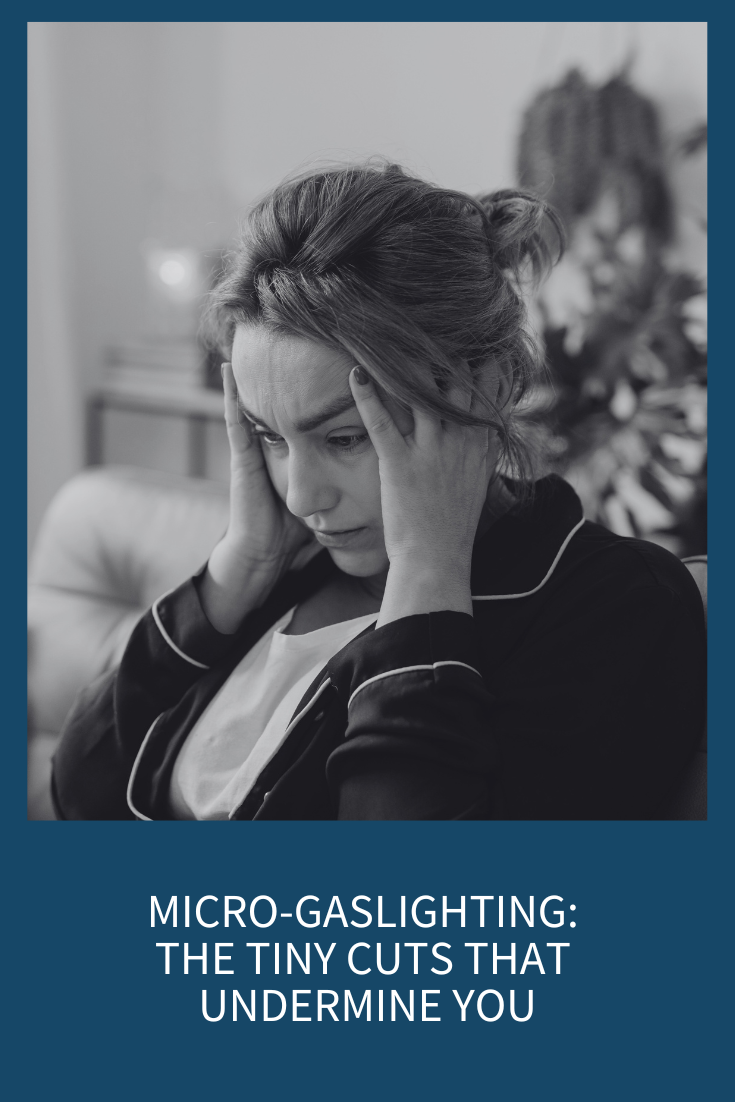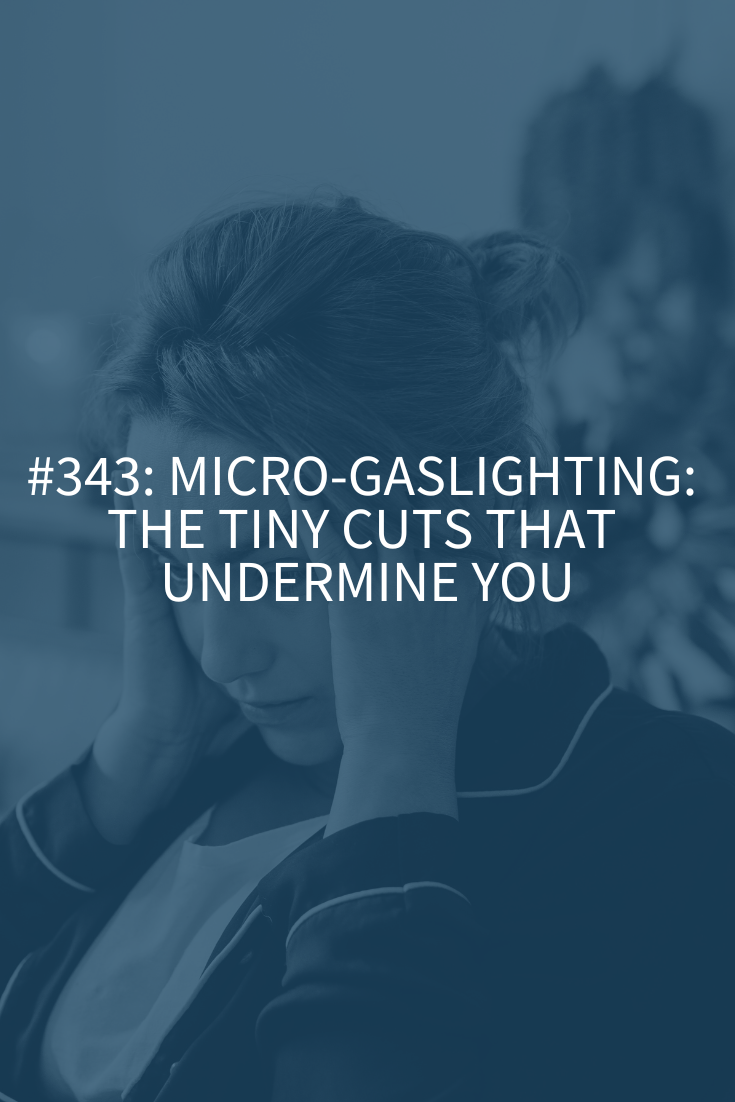
True story of me leaving my house for work:
I grab my keys, phone, bag and thermos. I lock all the locks and walk outside to get to my car. As my feet hit the concrete, I’m aware that something is off; that something doesn’t seem right. I walk another few steps before it hits me: I don’t hear the normal click clack of my stiletto heels on the pavement.
I look down to see that I’m all dressed up but still wearing my slippers. Sigh.
With a self-deprecating smack on my forehead I proceed to go unlock all the locks and go back into my house.
I stride resolutely inside … and realize that I have no idea why I’m there. Why did I walk back in the house? I wrack my brain but get no answers. I wander aimlessly around all the rooms hoping something will jog my memory…. but nothing! I even pick up some random objects hoping something will ring a bell, but I end up with nada, zeoh, zilch.
Now I’m starting to run a little late so I shake my head and figure it must not have been important. I leave, lock all the locks, walk back outside to get to my car and……
BAM! My feet hit the pavement and don’t make any noise and I finally remember that I needed to go put on some shoes!
(Cue to me maybe saying a curse word or two very loudly and stomping back into the house while I berate myself).
Here’s the really funny thing about all this (oh, stop laughing; any of you reading this who are over 40 have done something VERY similar, maybe even this morning)! What’s really funny is that I was on my way to do a corporate training on mindfulness! Needless to say, I had them rolling in the aisles when I opened with this story.
The good news is that I was alone, so no one was injured in my distracted morning (unless you count my bruised ego). But, insert people into this scenario and you get a different result.
Imagine this same morning of distraction but my partner reminds me innocently that we committed to a dinner tomorrow night and I’m supposed to bring a side dish and dessert. In my distracted state, I’m thinking about how busy I am and all the things I have to do and now I’m pissed (at myself really) for overcommitting. I snap at him because I’m looking for someone else to blame or I’m just feeling frustrated and a little overwhelmed so want to take those feelings out on someone. I do all this without even realizing what’s really happening.
He likely gets upset and says something like: “Hey, don’t blame me. You’re the one who said yes to this – I actually warned you at the time that you were taking on too much.”
Then we both end up leaving for our workdays on this sour note. It sucks!!
Distraction and not paying full attention to your interactions is the cause for the vast majority of your arguments, disconnections and misunderstandings.
One of the big problems is that our larger world is set up with distractions GALORE so it’s harder and harder to stay in the moment with our thoughts and feelings.
All month I’ve been teaching you all about how to be more mindful and self-aware. These are all the mental tactics you need to incorporate and they’re great, but we can’t leave out an important element: your physical environment. Today, we’re going to focus on your environment and setting yourself up for success physically so those mental tools will be easier to remember and implement.
Having your home and work worlds organized and calm is one area that I’d like to put a pin in for now. It’s a big topic so needs to be its own episode. For today, I want to focus on all the electronic distractions in your life. Specifically, I want to talk about your phone and social media.
From a Harvard Lab to a Vegas Casino
In the 1940s B.F. Skinner famously developed his theories on Operant Conditioning and Behaviorism at Harvard (I’ve heard that’s a pretty good school, by the way). His theory was that our behavior is determined by consequences (either reinforcements or punishments). These consequences make it more or less likely that the behavior will occur again.
His studies (and subsequent studies have reinforced this) showed that Intermittent Reinforcement is the most powerful consequence you can have if you want to get anyone to do almost anything.
Picture your dog begging for food at your dinner table. If you never gave him food, he’d eventually give up and stop coming to the table (yes, even retrievers). If you always gave him a little food off your plate (also known as continuous reinforcement), he’d come over pretty much every time and get the food and then sit around.
However, if you gave him food sometimes, but not all the time (intermittently), he’d beg long and hard. He’d be the most annoying dog to ever come near your dinner table. Because it’s this intermittent reward that’s the most powerful.
In Skinner’s lab he found that if pigeons were given food every time they pecked a button, they pecked a lot. If they were only sometimes given food when they pecked a button, they not only pecked much more, but were frantic and compulsive about it! (Is this why my son will open the refrigerator door searching for food ten times during the course of a day even when he knows I haven’t left the house to grocery shop?).
Skinner’s research found that these intermittent reinforcements are the hardest to extinguish. This means that the behavior will persist long after you stop giving the reward.
I was reading something recently where the author said:
“It could be argued that Skinner’s pigeon lab was resurrected at Harvard in 2004, with two modifications. It was called Facebook. And it didn’t use pigeons.”
All this intermittent reinforcement is the science used behind things like Slot Machines and Chuck E. Cheese (which is basically Las Vegas for toddlers). Gambling is addictive because you don’t know how many bets you’ll have to make before you might win.
It’s also the science behind all social media, apps, and advertising. The fact that you can access all of these things on that little phone you carry around adds up to trouble.
Addiction Technology Expert. Dr. David Greenfield, says:
“Smartphones are basically slot machines that we keep in our pockets.”
Here’s the big problem. Every time you get a text, social media update, likes, follows or other notifications, your brain sees this as a reward. This means that every single time one of these things happen, you get a dopamine release. Dopamine controls the pleasure centers of your brain.
Whenever Dopamine is released it makes you feel good and want more of whatever’s giving you that dopamine boost. This is why you want to keep eating, have more sex and stay on social media platforms.
You might also be interested in The One Big Mistake You Make When You Text Your Partner
You’ve been there. You’ve said to yourself: “I’m just going to answer this text” or “I’m just going to check real quick to see if John emailed me” or “I’ve got a couple of minutes, I’ll just look at my Instagram.” Next thing you know, it’s been 20 minutes down the rabbit hole of texting or scrolling. You’re trapped in a dopamine loop.
Why are we so vulnerable to all this in the first place? It’s because we, as humans, have a fundamental need to belong and a desire for social status.
Because of this, our brains treat information about ourselves like a reward.
Social Media Platforms Hook You
Social media platforms hook you because they have self-relevant information that connects directly to your social status and your reputation. We’re wired to be especially sensitive to information relating to our reputation and social ranking.
When you check Facebook or your Instagram feed you can’t predict whether or not someone left you self-relevant information. Social networking sites are just like those slot machines but instead of giving you coins, you pull the lever for self-relevant information.
If you always play this like a willpower game, you’re going to lose. Almost every app on your phone has been expertly engineered by designers skilled in manipulating brain chemistry to elicit addictive behaviors.
For example, Instagram created code that deliberately holds back on showing you new likes so that it can deliver a bunch of them in a sudden rush at the most effective moment possible. What’s the most effective moment possible? When seeing the most likes will discourage you from closing the app.
If you’re not scared, you’re not listening. Haven’t you ever wondered why all these social media platforms are free? It’s because they’re paid (very well) through advertisers looking for your attention.
You’ve no doubt freaked out when you were secretly searching the internet for sex toys and then you started getting sex toy advertisements in your Facebook feed. How do they know? Are they following me? The answer is “yes.” They’re watching you and following you. Yes, I buy sex toys #NoShameInMyGame.
At the end of the day, all of this distraction with tech adds up to distraction with yourself and your partner.
Yes, it impairs your own self-care (binge watching Netflix and not exercising per chance? Scrolling through your social media feed and not taking care of business? I see you)!
And it impairs your ability to connect with your partner!
If you want to learn about how your phone is killing your relationship (and what to do about it) Click Here.
Attention Residue is a thing and it’s killing your ability to fully connect
The last thing I want to say about all this is that all this social media and checking things creates something called attention residue and it’s killing you at home and at work.
Sophie Leroy, a business-school professor at the University of Minnesota, studied task switching and effectiveness. In her research she found that people are less productive when they’re constantly moving from one task to another instead of focusing on one thing at a time.
She says, “People need to stop thinking about one task in order to fully transition their attention and perform well on another. Yet, results indicate it is difficult for people to transition their attention away from an unfinished task and their subsequent task performance suffers.”
Leroy calls this carryover from one task to another “attention residue,” because you’re still thinking of whatever you were doing as you start something new.
She found that even if you finish the first task completely, you still have some attention residue as you move into the next conversation or task. This means that you don’t fully attend to that second task and you’re less productive.
In your relationships, this means you don’t fully focus on the conversation with your partner if you were just checking emails – even if you put your phone away in your pocket after you’ve finished!
It’s time to get serious about focusing our attention on the people we love and who are important to us.
Here are my top 5 tips to stop being distracted and to start connecting:
Tip #1: Take the Test
People throw around the term “addiction” pretty indiscriminately these days. According to Dr. David Greenfield, the director of the Center for Internet and Technology Addiction at the University of Connecticut School of Medicine. The actual percentage of smartphone users who would be classified as truly addicted is between 10-12%.
However, Dr. Greenfield states that around 90% of Americans fall in the category of overusing, misusing or abusing their devices.
So, are you a smartphone addict? Dr. Greenfield has actually developed something called the Smartphone Compulsion Test so you can know for sure.
A “yes” answer to more than 5 out of the 15 questions indicates that it’s likely that you have a problematic or compulsive Smartphone use pattern. I’m going to warn you that I’m not sure it’s possible to own a phone and not score at least 4 (which was my score, by the way).
Tip #2: Disable Notifications and Download a Tracking App
First thing first: go into your settings and disable your phone’s notifications. (Yes, all of them). Stop getting alerted so easily – it’s like having a plate of brownies on the table. It would be hard to not eat one just seeing that plate all the time but if someone was tugging on your sleeve constantly and reminding you the brownies were there, it would be impossible not to eat at least one (or seven).
After you’ve disabled your notifications, I want you to give yourself a reality check about just how much time you’re truly spending with your lover smart phone.
You can do this by downloading one of these awesome apps that monitor your usage:
- Freedom
- Moment
- StayFocusd
- BreakFree App (This app actually gives you a daily addiction score!)
Tip #3: Go Old School with Your Alarm Clock
Get your phone out of the bedroom. There are lots of reasons why you shouldn’t sleep with your phone and I don’t have time to list them all here. For now, you need to know that using your phone within an hour of bedtime leads to poorer sleep quality and more insomnia.
If you check your phone every time you wake up in the night, your sleep is even more negatively impacted. Lastly, when you wake up and check your phone before getting out of bed you’re reinforcing that habit for the rest of your day.
Tip #4: Success is Scheduled
There are two things I want you to do around scheduling.
First, assign discrete chunks of time throughout the day to go phone free. Try leaving your phone at home when you go out to dinner or leave it in your car for a few hours when you go to work or class. When you’re home at night, leave your phone in a different room so you can spend more quality time with your partner or kids.
Second, I want you to schedule time to talk with your partner if it’s something important. When you speak “on the fly” you’re likely suffering from attention residue and won’t fully attend to these significant conversations!
Tip #5: Be Mindful Baby
The real way out of all of this is to be present in your moments! It’s time to make mindfulness a habit! If you want a simple, effective way to do that, you can learn how to make mindfulness a habit right here.






